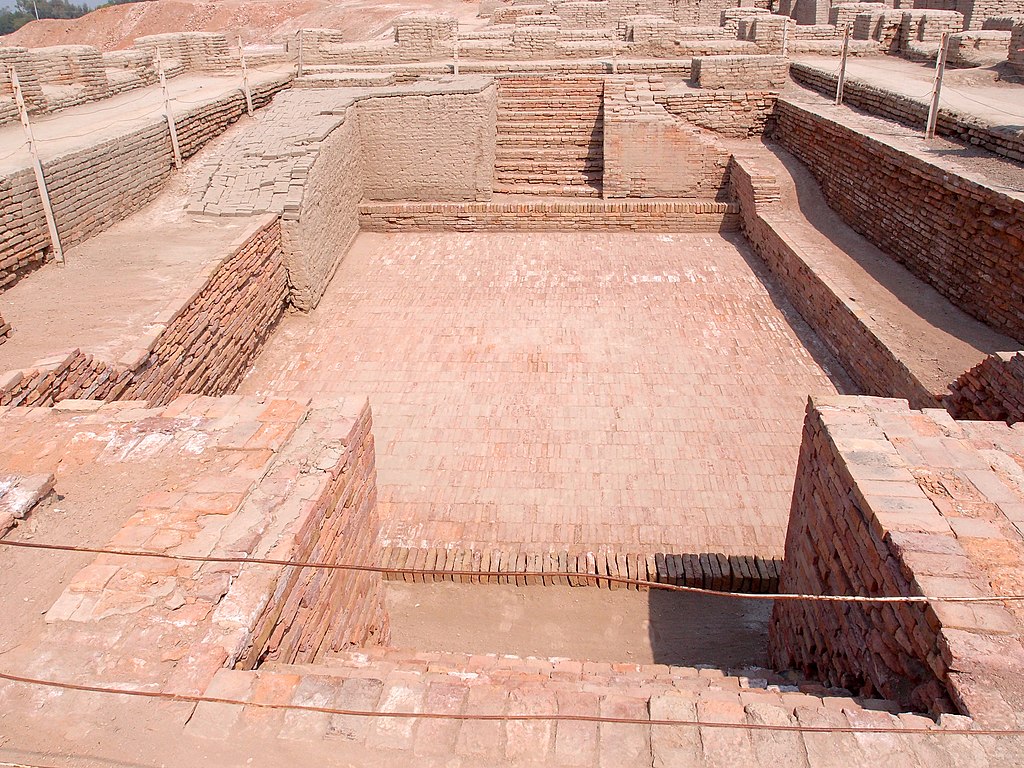Strictly speaking we are in the ceiling business but as most of our stretch ceiling installations are for swimming pools we are also in the swimming pool business. And when it comes to business we’re curious people; we’re always interested in new developments, techniques and materials but at the same time we’re interested in history. So for this blog we thought we would delve into the origins of swimming pools and how they developed into the booming industry we see in the UK these days.
So, here is Easy Ceiling’s brief history of swimming pools.
Ancient history of swimming pools

Various sources are of the opinion that the first swimming pool, called the “Great Bath”, was built at Mohenjo-daro, an archeological site in the province of Sindh, Pakistan. Built around 2500 BCE, Mohenjo-daro was one of the earliest major cities with an estimated population of 40,000. The “Great Bath” measured 12 by 7 metres and had a maximum depth of 2.4 metres. Scholars believe the bath would have been used for special religious functions where water was used to “purify” and “renew” bathers.
The Ancient Greeks were the first civilisation to build baths for recreational use, specifically athletic training in their palestras (wrestling schools), and for nautical games and military exercises. The Romans expanded on their use with Emperors even building their own swimming pools for private use eventually devising the first heated swimming pool, built for Gaius Maecenas around 30 BCE.
The Romans were also big fans and throughout their empire built many baths in the countries they conquered around the world including the famous Roman Baths in Bath, which date back to 70 CE.

Recent history of swimming pools
Public swimming pools became popular in the UK, and we assume the rest of the world, in the mid-19th century, and began to be built all over the country. At the turn of the 20th century, with the advent of the modern Olympic games, competitive swimming became a thing and so the passion for swimming and consequently the demand for swimming pools escalated rapidly. Initially demand was satisfied by the growth of public outdoor and indoor pools but in the second half of the 20th century residential swimming pools became a status symbol.
Swimming pools in the current day
Recent estimates point to there being approximately 3,000 public pools and over 200,000 residential pools in the UK. Whereas the majority of public pools, we estimate over 90%, are indoor, the converse is true of residential pools, although from our experience indoor swimming pools are on the increase, and these days it is the designer indoor swimming pool complete with twinkling multi-colour night sky lighting (made possible with stretch ceilings) that has become the ultimate status symbol.

And what about the history of stretch ceilings?
Although the combined history of stretch ceilings and swimming pools is relatively new, with the increasing popularity of indoor pools, the original concept of stretch ceilings is almost as old as swimming pools. In approximately 2000 BCE, Ancient Egyptians stretched damp cloth between walls to form a canvas ceiling with an even, smooth surface.
We hope you found our brief history of swimming pools interesting. If you would like to find out more about stretch ceilings please get in touch, we would love to hear from you.
